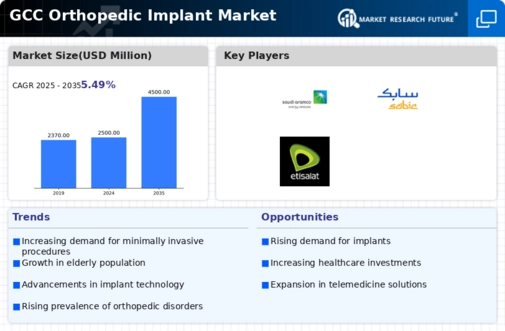The GCC Orthopedic Implant Market has become increasingly competitive, driven by rising demands for advanced orthopedic solutions and a growing aging population. This market is characterized by a range of key players, each striving to innovate and improve their product offerings to secure a stronger foothold. Competitive insights reveal that factors such as product quality, research and development capabilities, strategic partnerships, and an adaptive approach to regional regulatory requirements significantly influence market dynamics.
The interplay of these elements facilitates the emergence of robust competition as companies work to establish themselves as leaders in this essential healthcare segment.Tokyo Medical University holds a notable presence within the GCC Orthopedic Implant Market, recognized for its significant contributions to orthopedic education and research. Its strengths primarily stem from its focus on advancing medical practices through rigorous academic programs and innovative research initiatives. Tokyo Medical University is instrumental in providing healthcare professionals with advanced training in orthopedic procedures and implant technologies, thereby enhancing the overall quality of orthopedic care in the region.
The institution's commitment to fostering collaborations with healthcare stakeholders, coupled with its evidence-based research, enhances its reputation, making it a commendable contributor to the GCC orthopedic landscape.Arthrex stands out in the GCC Orthopedic Implant Market with its comprehensive portfolio that includes innovative surgical solutions and advanced orthopedic implants. Known for its commitment to minimally invasive surgical techniques, Arthrex's key products and services encompass a wide array of orthopedic devices designed to improve surgical outcomes. The company has established a solid market presence in the GCC through various strategic initiatives, including local partnerships and distribution agreements.
Notably, Arthrex has pursued mergers and acquisitions to expand its product offerings and enhance its technological capabilities within the region. The company's strengths lie in its consistent emphasis on quality and educational support for healthcare providers, which bolsters its position in the GCC market, reinforcing its dedication to advancing orthopedic surgery through cutting-edge products and solutions.















Leave a Comment